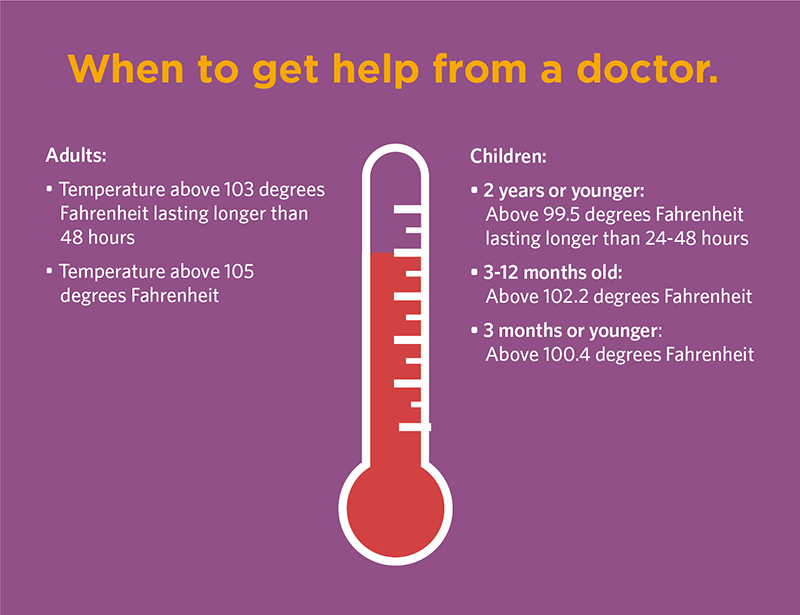Fever Guidelines: Causes, Symptoms, and When to Call the Doctor

Most of us have probably had fevers before and know what what they feel like. But what exactly is a fever, and when is it serious enough to require medical treatment? The answers are more complicated than you might think.
A natural response
A fever is our body’s response to infection, and can be a symptom of other problems. The hypothalamus in our brains controls body temperature. If you have an infection, the hypothalamus may crank up your body temperature to kill invading germs.
Throughout the day, our normal body temperature can range from 97.7-99.5 degrees Fahrenheit with a normal temperature of 98.5 degrees. When your normal body temperature rises above 99.5 degrees Fahrenheit, that often means you have a fever. But your temperature can rise for other reasons, such as taking a hot bath, exercise, menstruating, wearing warm clothes, etc.
Reasons for fever
- Cold
- Flu
- Pneumonia
- Ear infection
- Bladder infection
- Kidney infection
- Autoimmune disease
How to respond to your fever
We usually know when we have a fever, but the cause can be more difficult to pin down. You can heal on your own from a cold, but you’ll need to see your doctor for more serious problems such as pneumonia.
So, how do you know whether to “ride out” a fever or seek treatment? Your age and physical condition are important factors. The guidelines are different for adults vs. children experiencing a fever. But, no matter your age, you should always call your doctor if you have any of these additional symptoms:
- Stiff neck
- Confusion
- Rash
- Bruising
When to get help from a doctor
Adults:
- Temperature above 103 degrees Fahrenheit lasting longer than 48 hours
- Temperature above 105 degrees Fahrenheit
Children:
- 2 years or younger – Above 99.5 degrees Fahrenheit lasting longer than 24-48 hours
- 3-12 months old – Above 102.2 degrees Fahrenheit
- 3 months or younger – Above 100.4 degrees Fahrenheit
At-home treatment options
- Taking acetaminophen (not for use in young children)
- Drinking fluids
- Dressing in lightweight clothing
- Using a lightweight blanket for chills (remove when chills have subsided)
- Taking a lukewarm bath
References:
UPMC HealthBeat
http://share.upmc.com/2016/10/fever-treatment-guidelines/
WebMD
Fever Facts
https://www.webmd.com/first-aid/fevers-causes-symptoms-treatments#2-4Fe
Mayo Clinic
Fever: First Aid
https://www.mayoclinic.org/first-aid/first-aid-fever/basics/art-20056685




